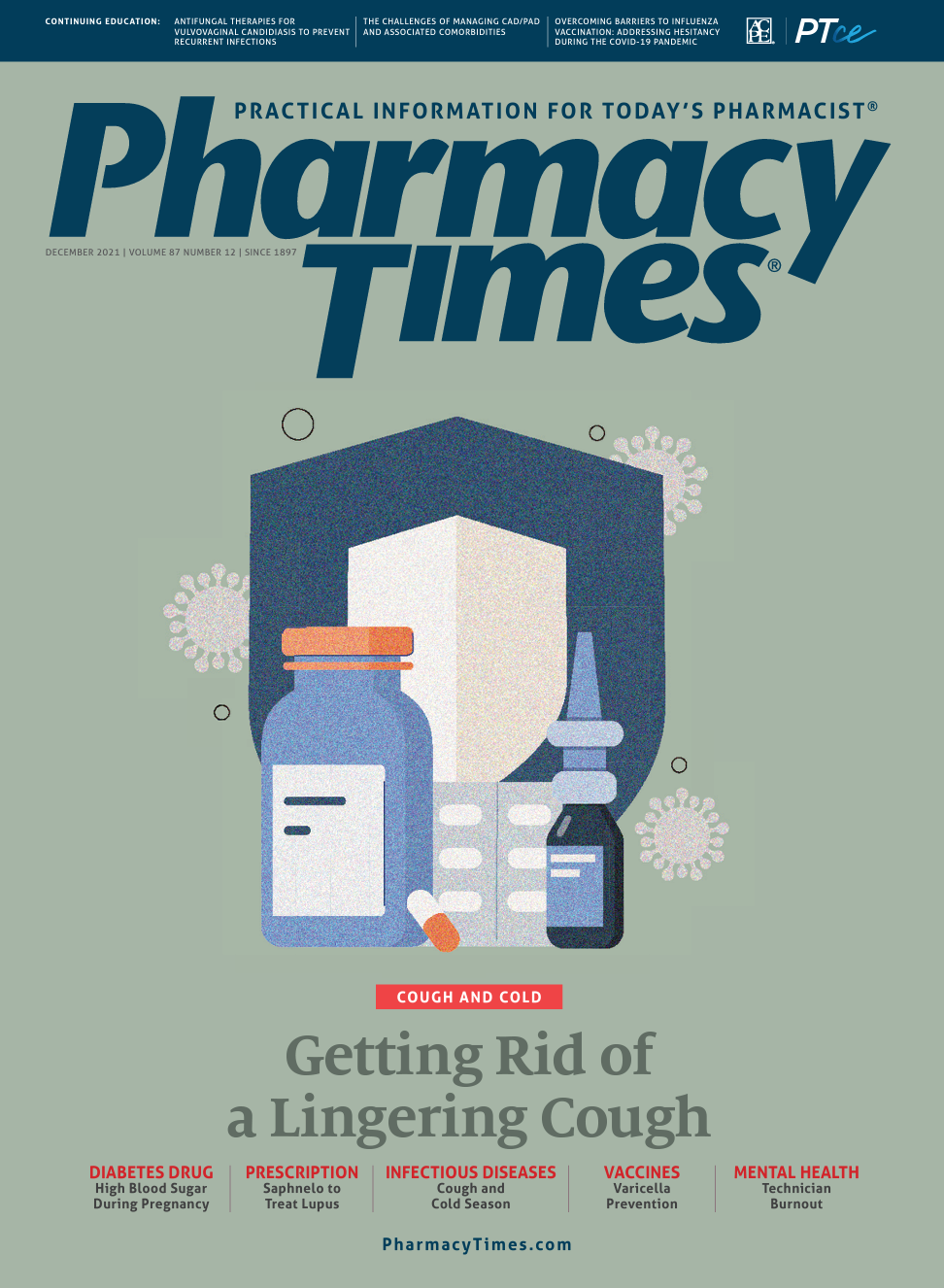Publication
Article
Pharmacy Times
Interactive Case Studies: December 2021
How would you respond to these patients' questions?
Case 1
The pharmacist on duty receives a call from BB, a 65-year-old woman with type 2 diabetes who says that her primary care provider (PCP) increased her dose of metformin from extended-release (ER) 750 mg daily to ER 1000 mg daily approximately 1 month ago. Since then, BB has noticed a metallic taste in her mouth, which she did not experience at the lower dose. She says that she did not start any new medications during that time, nor did she have any additional dose changes. BB’s other chronic medications include a daily multivitamin and amlodipine 5 mg daily ,both of which she has taken for years without incident. She wants to know if the situation could be elated to metformin and what advice, if any, the pharmacist has.
How should the pharmacist respond?
A. Metformin is transported via the organic cation transporter 3 transporter, which is highly expressed in the saliva.1 This may explain metformin’s ability to secrete and accumulate in the saliva, predisposing patients to a metallic taste. Although the medication can independently cause the metallic taste, so, too, can having poorly controlled diabetes. Prolonged hyperglycemia can damage nerves in the mouth and/or cause poor oral hygiene, such as cavities and gingivitis. Thus, poor oral hygiene can cause taste disturbances as well. The pharmacist should ask whether BB is bothered by the taste. If so, her PCP should lower her dose back to ER 750 mg daily. If further glycemic control is needed, other antidiabetic options can be explored. If BB wishes to continue the current dose, the pharmacist can advise on nondrug strategies, such as chewing sugarless gum, drinking plenty of water, and rinsing with mouthwash to reduce the unpleasant taste. The pharmacist should also encourage her to maintain euglycemia.
Reference
Lee N, Duan H, Hebert MF, Liang CJ, Rice KM, Wang J. Taste of a pill: organic cation transporter-3 (OCT3) mediates metformin accumulation and secretion in salivary glands. J Biol Chem. 2014;289(39):27055-27064. doi:10.1074/jbc.M114.570564
Case 2:
SW, a 34-year-old man, has started on the following insulin regimen: 22 units of neutral protamine Hagedorn (NPH) and 10 units of regular insulin before breakfast and 5 units of regular insulin and 10 units of NPH before dinner. He brings in his glucometer for review at a follow-up visit 2 weeks later, noting that he tests his sugar once daily in the morning before breakfast. A review of SW’s glucometer data shows a 7-day average of 150 mg/dL. Individual daily readings include 147 mg/dL, 176 mg/dL, 156 mg/dL, 161 mg/dL, 138 mg/dL, and 145 mg/dL. SW denies any signs or symptoms of hypoglycemia.
What changes to his insulin regimen should the pharmacist recommend to help the patient reach his glycemic goals?
A. The fasting plasma glucose (FPG) goal for SW is 80 to 130 mg/dL, per the American Diabetes Association. His elevated FPG suggests a need to adjust his basal insulin (eg, NPH). Given the pharmacokinetic profile of NPH, an adjustment of SW’s predinner NPH dose is warranted. The pharmacist can recommend increasing the predinner NPH dose by 2 to 6 units.1,2 SW should monitor closely for hypoglycemia. The pharmacist should encourage the patient to test his blood sugars before dinner and 2 hours after breakfast and dinner to assess if his other insulin doses are appropriate. If SW is bothered by fingerstick testing, he can discuss obtaining a continuous glucose monitor with his provider.
References
- American Diabetes Association. 9. Pharmacologic approaches to glycemic treatment: Standards of Medical Care in Diabetes-2021. Diabetes Care. 2021;44(suppl 1):S111-S124. doi:10.2337/dc21-S009
- Riddle MC, Rosenstock J, Gerich J; Insulin Glargine 4002 Study Investigators. The treat-to-target trial: randomized addition of glargine or human NPH insulin to oral therapy of type 2 diabetic patients. Diabetes Care. 2003;26(11):3080-3086. doi:10.2337/diacare.26.11.3080
Nicholas Beomio, PharmD, BCPS, is a clinical pharmacy specialist at ProHealth Physicians/OptumCare in Farmington, Connecticut.
Stefanie C. Nigro, PharmD, BCACP, CDCES, is an associate clinical professor at the University of Connecticut School of Pharmacy in Storrs.

Newsletter
Stay informed on drug updates, treatment guidelines, and pharmacy practice trends—subscribe to Pharmacy Times for weekly clinical insights.





